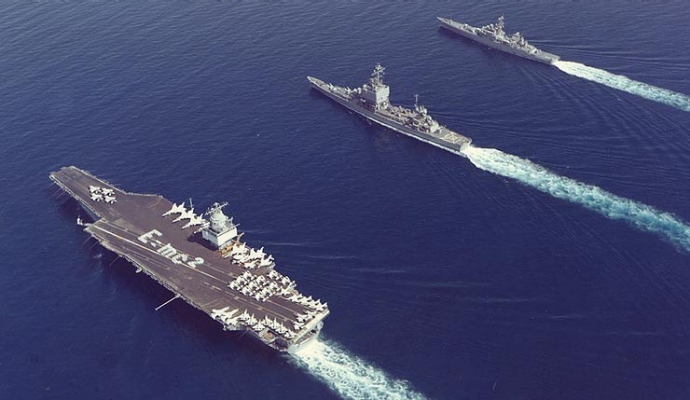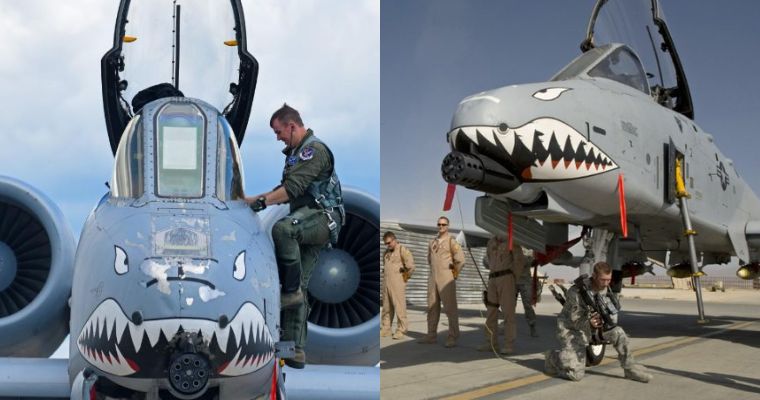

The US Navy will decommission the world’s first nuclear-powered aircraft carrier next week. The USS Enterprise played a major role in world events that included the Cuban Missile Crisis to the wars in Iraq and Afghanistan.The final goodbye ceremony will take place on 3 February at Newport News Shipbuilding. That’s the same shipyard where the carrier was built.

In 1954, Congress authorized the construction of the world’s first nuclear-powered aircraft carrier, the eighth U.S. ship to bear the name Enterprise.The giant ship was to be powered by eight nuclear reactors, two for each of its four propeller shafts. This was a daring undertaking. for never before had two nuclear reactors ever been harnessed together. As such, when the engineers first started planning the ship’s propulsion system, they were uncertain how it would work, or even if it would work according to their theories.
Materials used by the shipyard included 60,923 tons of steel; 1507 tons of aluminum; 230 miles of pipe and tubing; and 1700 tons of one-quarter-inch welding rods. The materials were supplied from more than 800 companies. Nine hundred shipyard engineers and designers created the ship on paper, and the millions of blueprints they created, laid end-to-end, would stretch 2400 miles, or from Miami to Los Angeles.

Three years and nine months after construction began, Enterprise was ready to present to the world as “The First, The Finest” super carrier.The newly-christened Enterprise left the shipyard for six days of builder and Navy pre-acceptance trials. Its escort during the trials, destroyer Laffey, sent this message; “Subject: Speed Trails. 1. You win the race. 2. Our wet hats are off to an area thoroughbred.” When the Big “E” returned to port, the Chief of Naval Operations, Admiral George W. Anderson, Jr., stated enthusiastically, “I think we’ve hit the jackpot.”
After years of planning and work by thousands the day finally arrived. At the commissioning of Enterprise, the world’s first nuclear-powered aircraft carrier, Secretary of the Navy John B. Connally Jr. called it a worthy successor to the highly decorated seventh USS Enterprise of World War II. “The fighting Gray Lady, as it was called, served in such well-known battles as the raid on Tokyo and the Battle of Midway.” Secretary Connally went on to say, “The new Enterprise will reign a long, long time as queen of the seas.”
USS Enterprise Commissioning ProgramIn October 1962, Enterprise was dispatched to its first international crisis. Enterprise and other ships in the Second Fleet set up quarantine of all military equipment under shipment to communist Cuba. The blockade was put in place on October 24, and the first Soviet ship was stopped the next day. On October 28, Soviet leader Krushchev agreed to dismantle nuclear missiles and bases in Cuba, concluding the Cuban Missile Crisis, the closest the U.S. and USSR have ever come to nuclear war.
 Enterprise en route back to the United States following the evacuation of Saigon; the forward end of the flight deck contains a number of USMC CH-53 Sea Stallion helicopters.
Enterprise en route back to the United States following the evacuation of Saigon; the forward end of the flight deck contains a number of USMC CH-53 Sea Stallion helicopters.
In the Fall of 2001, Enterprise aborted her transit home from a long deployment after the terrorist attacks in New York City and Washington D.C., on Sept. 11, and steamed overnight to the North Arabian Sea. In direct support of Operation Enduring Freedom, Big ‘E’ once again took its place in history by becoming one of the first units to respond in a crisis with its awesome striking power. Enterprise expended more than 800,000 pounds of ordnance during the operation. The ship returned to home port at Naval Station Norfolk November 10, 2001.
USS Enterprise in Marmaris, TurkeyFollowing several more deployments and an extended shipyard period that began in 2008, Enterprise embarked on its 21st deployment in January 2011, during which the carrier supported operations Enduring Freedom, New Dawn and multiple anti-piracy missions. During its six-month tour of duty, Big ‘E’ made port visits to Lisbon, Portugal, Marmaris, Turkey, the Kingdom of Bahrain and Mallorca, Spain.
Big ‘E’ became the fourth aircraft carrier in naval history to record 400,000 arrested landings on May 24, 2011. The milestone landing was made by an F/A-18F Super Hornet piloted by Lt. Matthew L. Enos and Weapon System Officer Lt. Cmdr. Jonathan Welsh from the Red Rippers of Strike Fighter Squadron (VFA) 11.
 NORFOLK (June 20, 2013) The aircraft carrier USS Enterprise (CVN 65) makes its final voyage to Newport News Shipbuilding. The first nuclear-powered aircraft carrier will be dismantled at the shipyard prior to the scheduled commissioning of the next aircraft carrier Enterprise (CVN 80). (U.S. Navy photo courtesy of Huntington Ingalls Industries by John Whalen/Released)
NORFOLK (June 20, 2013) The aircraft carrier USS Enterprise (CVN 65) makes its final voyage to Newport News Shipbuilding. The first nuclear-powered aircraft carrier will be dismantled at the shipyard prior to the scheduled commissioning of the next aircraft carrier Enterprise (CVN 80). (U.S. Navy photo courtesy of Huntington Ingalls Industries by John Whalen/Released)

400,000th landing aboard USS EnterpriseEnterprise aircraft launchOn November 25, 2011, Big ‘E’ celebrated its 50th birthday, making the carrier the oldest active duty ship in the U.S. Naval fleet. After 25 deployments and 51 years of active service. The USS Enterprise was officially inactivated December 1, 2012 and since then has spent the past several years being defueled and dismantled at Newport News Shipbuilding, the shipyard where it was built and refueled.
Source: warbirdsnews.com








